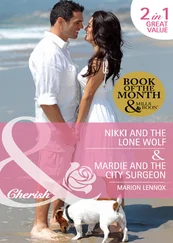Andrew Lang - Custom and Myth
Здесь есть возможность читать онлайн «Andrew Lang - Custom and Myth» — ознакомительный отрывок электронной книги совершенно бесплатно, а после прочтения отрывка купить полную версию. В некоторых случаях можно слушать аудио, скачать через торрент в формате fb2 и присутствует краткое содержание. Жанр: foreign_antique, foreign_prose, на английском языке. Описание произведения, (предисловие) а так же отзывы посетителей доступны на портале библиотеки ЛибКат.
- Название:Custom and Myth
- Автор:
- Жанр:
- Год:неизвестен
- ISBN:нет данных
- Рейтинг книги:3 / 5. Голосов: 1
-
Избранное:Добавить в избранное
- Отзывы:
-
Ваша оценка:
- 60
- 1
- 2
- 3
- 4
- 5
Custom and Myth: краткое содержание, описание и аннотация
Предлагаем к чтению аннотацию, описание, краткое содержание или предисловие (зависит от того, что написал сам автор книги «Custom and Myth»). Если вы не нашли необходимую информацию о книге — напишите в комментариях, мы постараемся отыскать её.
Custom and Myth — читать онлайн ознакомительный отрывок
Ниже представлен текст книги, разбитый по страницам. Система сохранения места последней прочитанной страницы, позволяет с удобством читать онлайн бесплатно книгу «Custom and Myth», без необходимости каждый раз заново искать на чём Вы остановились. Поставьте закладку, и сможете в любой момент перейти на страницу, на которой закончили чтение.
Интервал:
Закладка:
Our method will be, to prove the existence of singular rules of etiquette, corresponding to the etiquette accidentally infringed by Pururavas. We shall then investigate stories of the same character as that of Urvasi and Pururavas, in which the infringement of the etiquette is chastised. It will be seen that, in most cases, the bride is of a peculiar and perhaps supernatural race. Finally, the tale of Urvasi will be taken up again, will be shown to conform in character to the other stories examined, and will be explained as a myth told to illustrate, or sanction, a nuptial etiquette.
The lives of savages are bound by the most closely-woven fetters of custom. The simplest acts are ‘tabooed,’ a strict code regulates all intercourse. Married life, especially, moves in the strangest fetters. There will be nothing remarkable in the wide distribution of a myth turning on nuptial etiquette, if this law of nuptial etiquette proves to be also widely distributed. That it is widely distributed we now propose to demonstrate by examples.
The custom of the African people of the kingdom of Futa is, or was, even stricter than the Vedic custom of women – ‘wives never permit their husbands to see them unveiled for three years after their marriage.’ 64 64 Astley, Collection of Voyages , ii. 24. This is given by Bluet and Moore on the evidence of one Job Ben Solomon, a native of Bunda in Futa. ‘Though Job had a daughter by his last wife, yet he never saw her without her veil, as having been married to her only two years.’ Excellently as this prohibition suits my theory, yet I confess I do not like Job’s security.
In his ‘Travels to Timbuctoo’ (i. 94), Caillié says that the bridegroom ‘is not allowed to see his intended during the day.’ He has a tabooed hut apart, and ‘if he is obliged to come out he covers his face.’ He ‘remains with his wife only till daybreak’ – like Cupid – and flees, like Cupid, before the light. Among the Australians the chief deity, if deity such a being can be called, Pundjel, ‘has a wife whose face he has never seen,’ probably in compliance with some primæval etiquette or taboo. 65 65 Brough Smyth, i. 423.
Among the Yorubas ‘conventional modesty forbids a woman to speak to her husband, or even to see him, if it can be avoided.’ 66 66 Bowen, Central Africa , p. 303.
Of the Iroquois Lafitau says: ‘Ils n’osent aller dans les cabanes particulières où habitent leurs épouses que durant l’obscurité de la nuit.’ 67 67 Lafitau, i. 576.
The Circassian women live on distant terms with their lords till they become mothers. 68 68 Lubbock, Origin of Civilisation (1875), p. 75.
Similar examples of reserve are reported to be customary among the Fijians.
In backward parts of Europe a strange custom forbids the bride to speak to her lord, as if in memory of a time when husband and wife were always of alien tribes, and, as among the Caribs, spoke different languages.
In the Bulgarian ‘Volkslied,’ the Sun marries Grozdanka, a mortal girl. Her mother addresses her thus: —
Grozdanka, mother’s treasure mine,
For nine long years I nourished thee,
For nine months see thou do not speak
To thy first love that marries thee.
M. Dozon, who has collected the Bulgarian songs, says that this custom of prolonged silence on the part of the bride is very common in Bulgaria, though it is beginning to yield to a sense of the ludicrous. 69 69 Chansons Pop. Bulg ., p. 172.
In Sparta and in Crete, as is well known, the bridegroom was long the victim of a somewhat similar taboo, and was only permitted to seek the company of his wife secretly, and in the dark, like the Iroquois described by Lafitau.
Herodotus tells us (i. 146) that some of the old Ionian colonists ‘brought no women with them, but took wives of the women of the Carians, whose fathers they had slain. Therefore the women made a law for themselves, and handed it down to their daughters, that they should never sit at meat with their husbands, and that none should ever call her husband by his name .’ In precisely the same way, in Zululand the wife may not mention her husband’s name, just as in the Welsh fairy tale the husband may not even know the name of his fairy bride, on pain of losing her for ever. These ideas about names, and freakish ways of avoiding the use of names, mark the childhood of languages, according to Mr. Max Müller, 70 70 Lectures on Language , Second Series, p. 41.
and, therefore, the childhood of Society. The Kaffirs call this etiquette ‘Hlonipa.’ It applies to women as well as men. A Kaffir bride is not called by her own name in her husband’s village, but is spoken of as ‘mother of so and so,’ even before she has borne a child. The universal superstition about names is at the bottom of this custom. The Aleutian Islanders, according to Dall, are quite distressed when obliged to speak to their wives in the presence of others. The Fijians did not know where to look when missionaries hinted that a man might live under the same roof as his wife. 71 71 J. A. Farrer, Primitive Manners , p. 202, quoting Seemann.
Among the Turkomans, for six months, a year, or two years, a husband is only allowed to visit his wife by stealth.
The number of these instances could probably be increased by a little research. Our argument is that the widely distributed myths in which a husband or a wife transgresses some ‘custom’ – sees the other’s face or body, or utters the forbidden name – might well have arisen as tales illustrating the punishment of breaking the rule. By a very curious coincidence, a Breton sailor’s tale of the ‘Cupid and Psyche’ class is confessedly founded on the existence of the rule of nuptial etiquette. 72 72 Sébillot, Contes Pop. de la Haute-Bretagne , p. 183.
In this story the son of a Boulogne pilot marries the daughter of the King of Naz – wherever that may be. In Naz a man is never allowed to see the face of his wife till she has borne him a child – a modification of the Futa rule. The inquisitive French husband unveils his wife, and, like Psyche in Apuleius, drops wax from a candle on her cheek. When the pair return to Naz, the king of that country discovers the offence of the husband, and, by the aid of his magicians, transforms the Frenchman into a monster. Here we have the old formula – the infringement of a ‘taboo,’ and the magical punishment – adapted to the ideas of Breton peasantry. The essential point of the story, for our purpose, is that the veiling of the bride is ‘the custom of women,’ in the mysterious land of Naz. ‘C’est l’usage du pays: les maris ne voient leurs femmes sans voile que lorsqu’elles sont devenues mères.’ Now our theory of the myth of Urvasi is simply this: ‘the custom of women,’ which Pururavas transgresses, is probably a traditional Aryan law of nuptial etiquette, l’usage du pays , once prevalent among the people of India.
Конец ознакомительного фрагмента.
Текст предоставлен ООО «ЛитРес».
Прочитайте эту книгу целиком, купив полную легальную версию на ЛитРес.
Безопасно оплатить книгу можно банковской картой Visa, MasterCard, Maestro, со счета мобильного телефона, с платежного терминала, в салоне МТС или Связной, через PayPal, WebMoney, Яндекс.Деньги, QIWI Кошелек, бонусными картами или другим удобным Вам способом.
Читать дальшеИнтервал:
Закладка:
Похожие книги на «Custom and Myth»
Представляем Вашему вниманию похожие книги на «Custom and Myth» списком для выбора. Мы отобрали схожую по названию и смыслу литературу в надежде предоставить читателям больше вариантов отыскать новые, интересные, ещё непрочитанные произведения.
Обсуждение, отзывы о книге «Custom and Myth» и просто собственные мнения читателей. Оставьте ваши комментарии, напишите, что Вы думаете о произведении, его смысле или главных героях. Укажите что конкретно понравилось, а что нет, и почему Вы так считаете.












